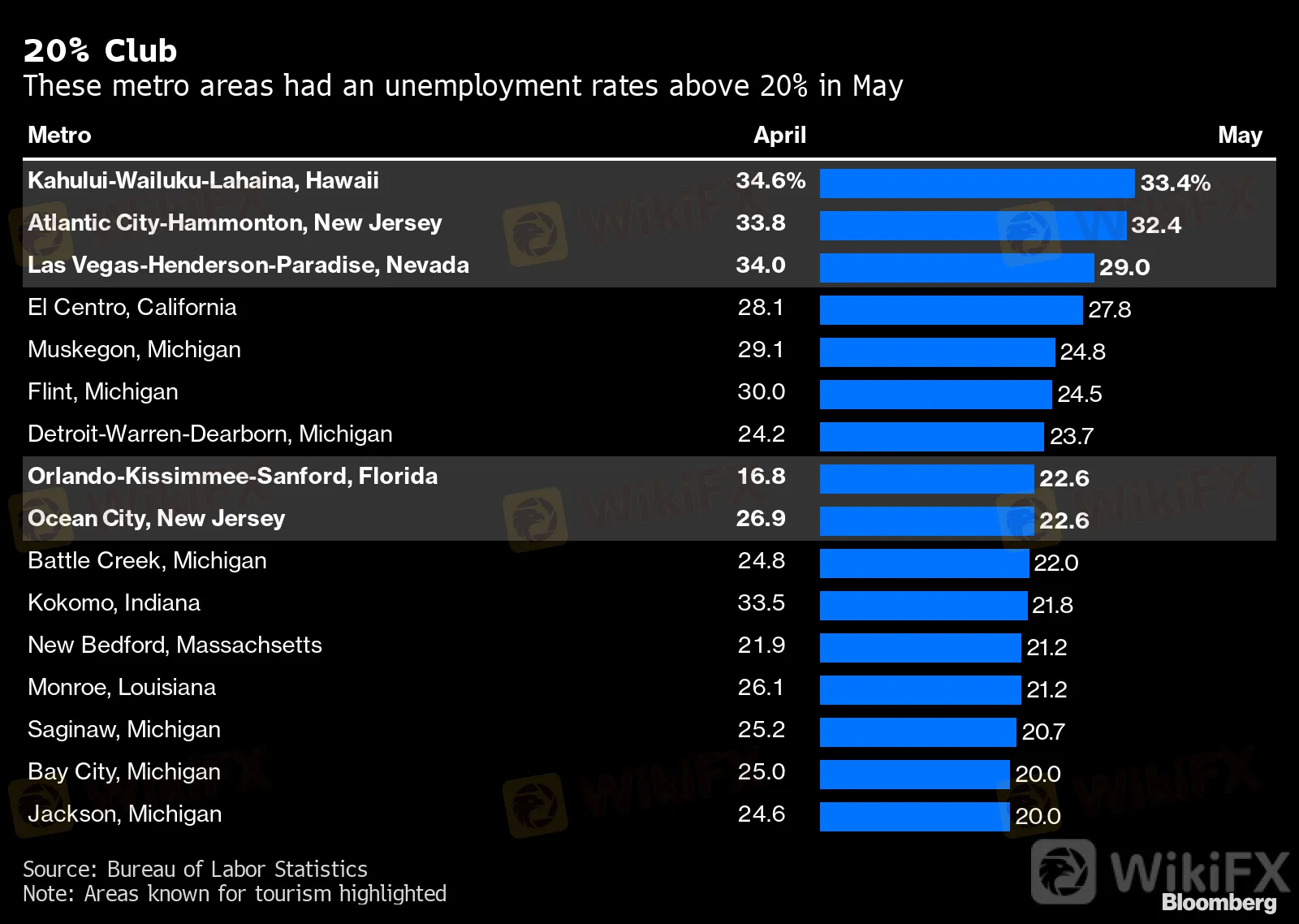简体中文
繁體中文
English
Pусский
日本語
ภาษาไทย
Tiếng Việt
Bahasa Indonesia
Español
हिन्दी
Filippiiniläinen
Français
Deutsch
Português
Türkçe
한국어
العربية
Vegas Is Big Jobs Loser, RV Hub Holds On in New Tourism Economy
Abstract:The American cities most dependent on tourism are suffering some of the worst labor markets in the coronavirus recession, with almost one-third of workers unemployed in vacation destinations from Hawaii to the east coast.
The American cities most dependent on tourism are suffering some of the worst labor markets in the coronavirus recession, with almost one-third of workers unemployed in vacation destinations from Hawaii to the east coast.
The jobless rate in Kahului-Wailuku-Lahaina in Hawaii and Atlantic City-Hammonton in New Jersey surpassed 30% in May, the highest in any U.S. metropolitan areas, according to data released Wednesday by the Bureau of Labor Statistics. Las Vegas-Henderson-Paradise in Nevada was close behind.
Meanwhile, Elkhart, Indiana -- known as the recreational vehicle capital of the world -- saw one of the biggest labor-market recoveries in May, as its jobless rate fell back to 11.9% from almost 30%. RV plants have reopened to cater for surging demand, as vacation-seeking Americans shun crowded planes and hotels in favor of a more socially distanced kind of tourism.
“We have seen an incredible rebound and retail demand and dealer demand,” said Michael J. Happe, chief executive of RV-maker Winnebago, in an earnings call last week. Thor Industries, an Elkhart-based RV builder, has seen its stock surge more than 200% from March lows.
20% Club
These metro areas had an unemployment rates above 20% in May
Source: Bureau of Labor Statistics
Note: Areas known for tourism highlighted

In general, tourist economies that rely on visitors flying in have been hit harder than those where more people come by car, said Mark Vitner, senior economist with Wells Fargo & Co. While there are signs of revival in some beach resorts and areas near national parks, “the recent surge in infections may put this rebound at risk,” he said.
Nationwide, unemployment eased to 13.3% in May and is forecast to extend the drop to 12.5% in the June jobs report, due out on Thursday. The BLS said the actual rate was somewhat higher after adjustment for data-collection discrepancies.
Disclaimer:
The views in this article only represent the author's personal views, and do not constitute investment advice on this platform. This platform does not guarantee the accuracy, completeness and timeliness of the information in the article, and will not be liable for any loss caused by the use of or reliance on the information in the article.
WikiFX Broker
Latest News
INFINOX Partners with Acelerador Racing for Porsche Cup Brazil 2025
The Dark Side of Trading Gurus: Are You Following a Fraud?
Currency Calculator







